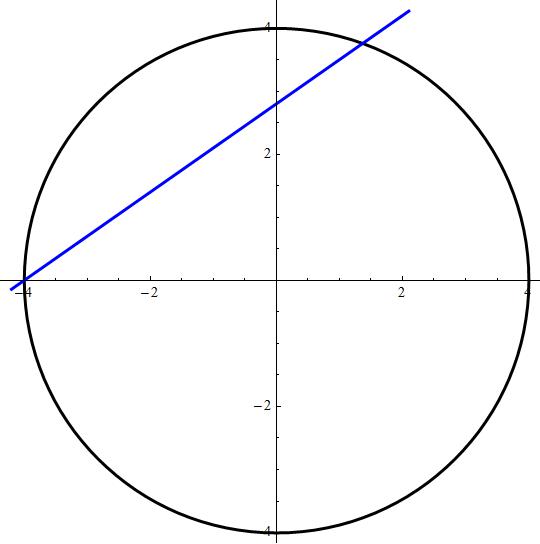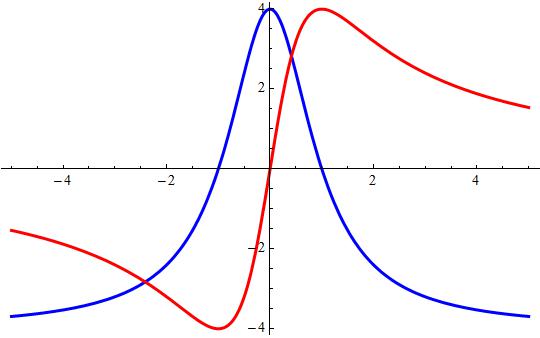How do you find the parametric equations for the rectangular equation #x^2+y^2=16#?
2 Answers
Explanation:
the most sensible/common paramaterisation here is to recognise that this is a circle, or just to acknowledge the Pythagorean identity:
so if we take your equation
...and re-write it slightly as
then we see that if we set
we can use the identity
So the parameterisation is
so that, just to check,
Explanation:
This circle
is origin centered with radius
This line intersects the circle in one more point, depending on its declivity.
The intersection
giving for
This last solution, gives us a circle's parameterization for

Attached also a comparative plot for



